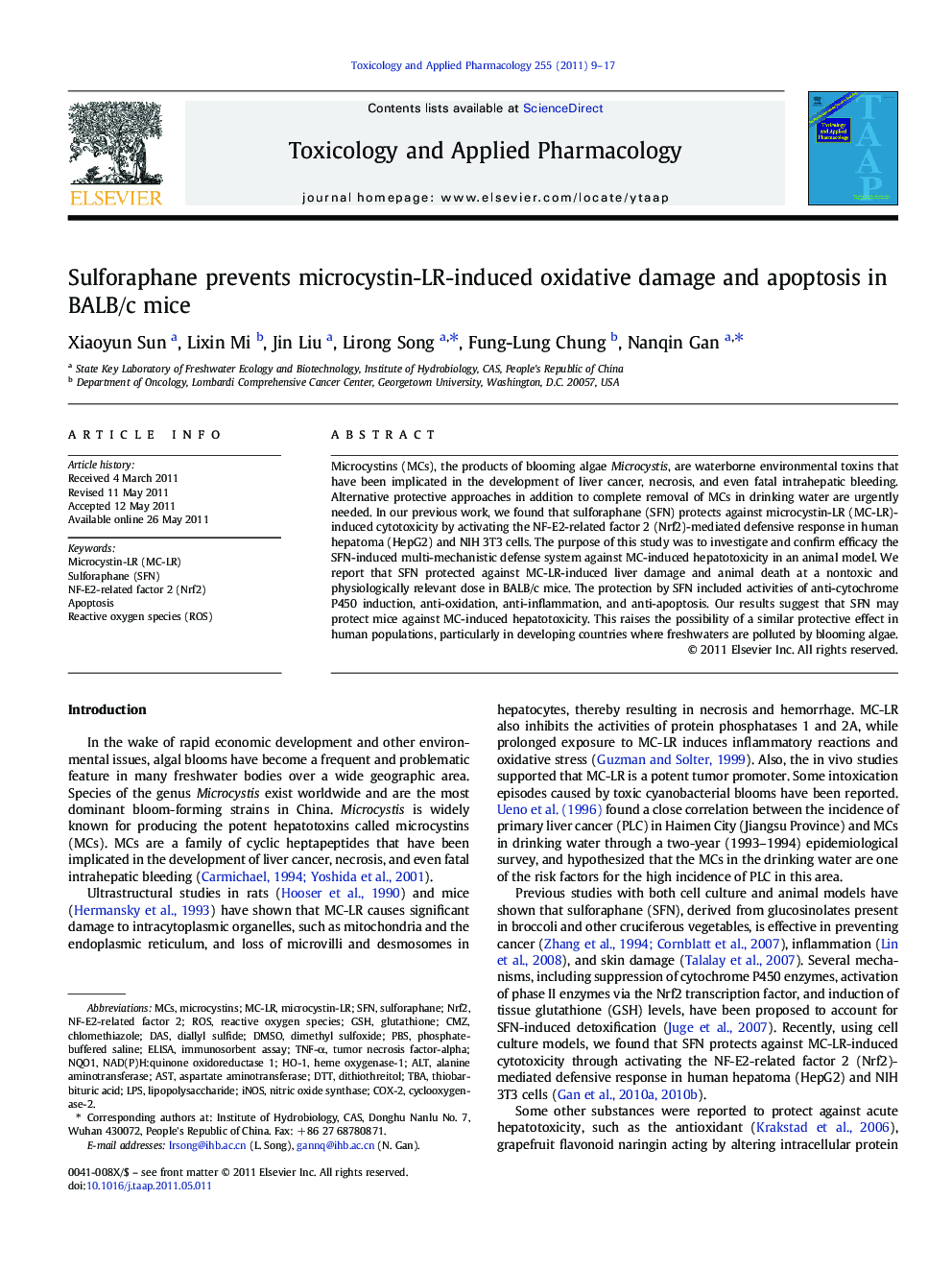| Article ID | Journal | Published Year | Pages | File Type |
|---|---|---|---|---|
| 2569489 | Toxicology and Applied Pharmacology | 2011 | 9 Pages |
Microcystins (MCs), the products of blooming algae Microcystis, are waterborne environmental toxins that have been implicated in the development of liver cancer, necrosis, and even fatal intrahepatic bleeding. Alternative protective approaches in addition to complete removal of MCs in drinking water are urgently needed. In our previous work, we found that sulforaphane (SFN) protects against microcystin-LR (MC-LR)-induced cytotoxicity by activating the NF-E2-related factor 2 (Nrf2)-mediated defensive response in human hepatoma (HepG2) and NIH 3T3 cells. The purpose of this study was to investigate and confirm efficacy the SFN-induced multi-mechanistic defense system against MC-induced hepatotoxicity in an animal model. We report that SFN protected against MC-LR-induced liver damage and animal death at a nontoxic and physiologically relevant dose in BALB/c mice. The protection by SFN included activities of anti-cytochrome P450 induction, anti-oxidation, anti-inflammation, and anti-apoptosis. Our results suggest that SFN may protect mice against MC-induced hepatotoxicity. This raises the possibility of a similar protective effect in human populations, particularly in developing countries where freshwaters are polluted by blooming algae.
Graphical abstractFigure optionsDownload full-size imageDownload high-quality image (89 K)Download as PowerPoint slideResearch Highlights► SFN protected against MC-LR-induced liver damage and animal death in BALB/c mice. ► The dose of SFN is at a nontoxic and physiologically relevant dose. ► The protection included activities of anti-oxidation, anti-inflammation, and anti-apoptosis. ► SFN may protect mice against MC-induced hepatotoxicity.
